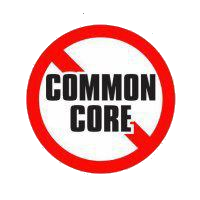Federal Education Bills – Reauthorization of ESEA
House Bill HR 5 – Student Success Act (SSA) passed 218 – 213.
Senate Bill S 1177 – Every Child Achieves Act (ECAA) passed 81 – 17.
Next Steps —
The House and Senate must write a Conference Report to reconcile the two bills.
There is some hope –
a. Reconciliation may not occur.
b. Pres.Obama may not sign the reconciled measure.
Important proviso —
Because the American people have lost their trust in this President and in this Congress, now is not the time to pass the reauthorization of NCLB. We need to wait until after the elections of 2016. Any bill that Pres. Obama would sign means that the bill is full of the same philosophy of education that perpetuates his Common Core Standards Initiative.
Take Action —
a. Contact your Representatives and Senators.
b. Tell them to oppose the reconciled measure.
c. Because Congressmen and Senators are back in their home districts for the August recess, now is the time to contact them about the NCLB reauthorization bills.
d. Tell them “Just Say No.”
Senator Kelly Ayotte: Phone: 202-224-3324 or Phone: 603-622-7979
Senator Jeanne Shaheen: Ph: (202) 224-2841 or Ph: (603) 647-7500
Congressman Frank Guinta: Phone: (202) 225-5456 or Phone: (603) 641-9536
Congresswoman Anne Kuster: Phone: (202) 225-5206 or Phone: (603) 595-2006
Problems with Every Child Achieves Act (ECAA)
http://www.educationviews.org/problems-child-achieves-act-ecaa/
The following is a list of problems with the Every Child Achieves Act (ECAA):
1. The ECAA is too long; at 792 pages, the bill is 122 pages longer than the burdensome No Child Left Behind law (NCLB).
2. The new language in the ECAA does not restrict the U.S. Department of Education (USED) because:
a. The language simply replicates existing protections.
b. The proposed provisions fail to provide an enforcement mechanism for states.
c. The ECAA aligns the states to the same College-and Career-Ready Standards as in the Common Core Standards.
3. The ECAA continues the same USED master-servant relationship, requiring states to submit education plans to USED.
4. The ECAA retains the federal testing mandates, continuing the NCLB “teach-to-the-test” environment.
5. The ECAA requires standards to be aligned with federal workforce standards and early childhood standards.
6. If a state fails to meet the requirements of a listed program, the USED can force the state to make the mandated changes.
7. ECAA requires states to have College-and Career-Ready Standards, code language for Common Core Standards.
8. ECAA requires states to align to the Common Core Standards.
9. ECAA penalizes schools that do not enforce that 95 % of their students take the state assessment.
10. ECAA dictates particular tests that are very expensive; the tests inject intrusive psychological data collection and profiling into the assessments.
11. ECAA maintains NCLB’s requirement that states produce individual student interpretive reports that contain behavioral skills.
12. All states could be required to submit detailed student profiles to USED.
13. ECAA allows NAEP to implement the probing of students’ psychological traits (e.g., “mindsets,” “grit,” etc.).
14. ECAA eliminates NCLB’s prohibition against very personal items (family beliefs and attitudes, psychological data).
15. ECAA details the framework of the states’ accountability systems.
16. ECAA extends the tentacles of federal control into public preschools.
17. ECAA contains Early Learning Alignment and Improvement Grants. This includes childcare and Head Start, but the grants expire in three years. Even though early childhood programs have little proven educational benefit, the government bureaucrats will gain influence over very young children.
18. ECAA requires statewide preschools to align with federal standards under Head Start and Child Care and Development Block Grant (CCDBG).
19. ECAA includes “school climate” formula grants to force students to adopt certain world-views.
20. ECAA includes formula grants for “extended learning opportunities” to ensure children spend more time at school and less time with their families.
21. ECAA fulfills Arne Duncan’s desire to make schools “21st-century community learning centers.” This fosters reliance on the government schools rather than on families or churches.
Source: This list was compiled from “The Every Child Achieves Act – A Wolf in Sheep’s Clothing,” by American Principles in Action.
